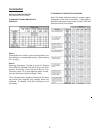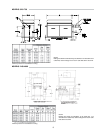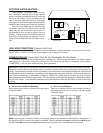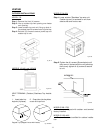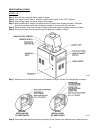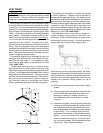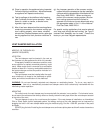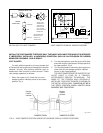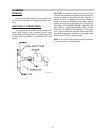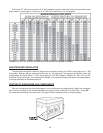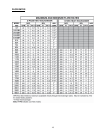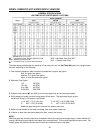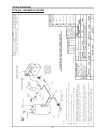
VENT PIPING
WARNING: Indoor heaters require a drafthood that
must be connected to a vent pipe and properly vented
to the outside. Failure to follow this procedure can
cause fire or fatal carbon monoxide poisoning.
Vent piping of the same size as the drafthood outlet
is recommended, however, when the total vent height
is at least ten (10) feet (drafthood relief opening to vent
terminal), the vent pipe size may be reduced as speci-
fied in Chapter 10 of the National Fuel Gas Code, ANSI
Z 223.1. Avoid long horizontal runs of vent pipe and too
many elbows. If installation requires horizontal non-
vertical runs, the vent pipe must have a minimum of
1/4 inch per foot rise and should be supported at not
more than five foot intervals. Plumber's tape, criss-
crossed, will serve to space both horizontal and vertical
piping. Gas vents supported only by the flashing and
extending above the roof more than five feet should be
securely guyed or braced to withstand snow and wind
loads. We recommend use of an insulated vent pipe
spacer through the roofs and walls.
For protection against rain or blockage by snow, the
vent pipe must terminate with a vent cap which com-
plies with the local codes or, in the absence of such
codes, to the latest edition of the National Fuel Gas
Code, ANSI Z223.1.
The discharge opening must be a minimum of two
feet vertically from the roof surface and at least 2 feet
higher than any part of the building or equipment within
ten feet. The vent stack shall be at least 5 feet in vertical
height above the drafthood outlet. The vent cap loca-
tion shall have a minimum clearance of 4 feet horizon-
tally from, and in no case above or below, unless a 4-
foot horizontal distance is maintained, from electric
meters, gas meters regulators and relief equipment.
.
14
Fig. #7043.1
At the time of removal of an existing heater, the follow-
ing steps shall be followed with each appliance remain-
ing connected to the common venting system placed in
operation, while the other appliances remaining con-
nected to the common venting system are not in
operation.
(a) Seal any unused openings in the common venting
system.
(b) Visually inspect the venting system for proper size
and horizontal pitch and make sure there is no
blockage or restriction, leakage, corrosion or
other deficiency which could cause an unsafe
condition.
(c) Insofar as is practical, close all building doors and
windows and all doors between the space in which
the appliances remaining connected to the com-
mon venting system are located and other spaces
of the building. Turn on clothes dryers and any
appliance not connected to the common venting
system. Turn on any exhaust fans, such as range
hoods and bathroom exhausts, so they will oper-
ate at maximum speed. Do not operate a summer
exhaust fan. Close fireplace dampers.
The weight of the vent stack or chimney must not rest
on heater drafthood. Support must be provided in
compliance with applicable codes. The heater top and
drafthood must be readily removable for maintenance
and inspection. Vent pipe should be adequately sup-
ported to maintain proper clearances from combustible
construction Type "B" double wall or equivalent vent
pipe is recommended. However single wall metal vent
pipe may be used as specified in the latest edition of the
National Flue Gas Code ANSI Z223.1.
Manifolds that connect more than one heater to a
common chimney must be sized to handle the com-
bined load. Consult available guides for proper sizing
of the manifold and the chimney. At no time should the
area be less than the area of the largest outlet.
5' MIN
2' MIN
10' OR LESS
2' MIN
VENT CAP
VENT PIPE
DRAFT HOOD
HEATER



